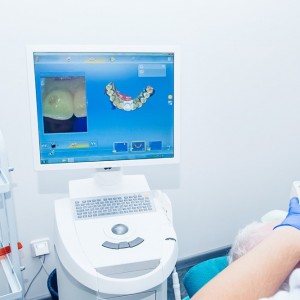
Adhesive cementation: an unknown world
Massimo Gagliani
A question from an old friend on the subject prompted me to write this editorial. In its ultimate sense it was also intriguing: do new materials have cementation problems? Has the advent of CAD/CAM changed the criteria for cementation?
My good fortune has always been to have good friends and teachers in the field. I learned from them how to reason and not about a specific product or technique. The latter go out of fashion and, above all, if they do not obey certain logic, they must be viewed with suspicion.
Our publishing house has already produced, through the work of talented researchers, an excellent text about it but I don't want to advertise in this editorial.
I will limit myself to making two purely logical reflections which, more than 30 years after the advent of modern adhesive systems, must be a common heritage.
The first: the diversity of substrates, enamel and dentin, provides different adhesion values. This is an incontrovertible fact.
The two substrates deserve specific treatment systems to provide the best conditions for "adhesion." Neglecting this peculiarity means ignoring the basic element for conducting a correct adhesive procedure. Ergo, limiting one's knowledge to a system sold as "faso tuto mi" — in a rough translation, “does everything” in English — would be akin to driving on slick tires when it snows.
A second aspect relates to the knowledge of materials. Each material, ceramic or resinous, has a surface treatment system that deserves due attention, which is not marginal and must be put into practice in the dental office. Without attention to these matters, the adhesive bond is fallacious, and everything vanishes.
I have heard the expression, "If something doesn't work, read the instructions." Our instructions are represented by books, articles and conferences which, if doubts remain, perhaps are not read often enough or in terms of events, are not attended enough.
 Related articles
Related articles
Products 01 September 2025
Dentsply Sirona Releases Innovative CAD/CAM Zirconia Block and Abutment Resin Cement
The CEREC Cercon 4D Multidimensional Zirconia Abutment Block combines high strength with aesthetics for both hybrid abutments and hybrid abutment crowns.
Restorative dentistry 01 July 2025
Advances in CAD/CAM Technology for Chairside Restorative Dentistry: A Workflow Analysis
Chairside CAD/CAM technology has revolutionized restorative dentistry, offering streamlined workflows and improved patient outcomes.
News 03 February 2025
Directa USA is excited to introduce Ceramir CAD/CAM BLOCKS, a revolutionary bioceramic material that marks a groundbreaking advancement in prosthetic materials and embodies the spirit of...
Advances in dental materials as well as in computer technology have made CAD/CAM-fabricated restorations not just possible in dentistry but plentiful.
Ceramir CAD/CAM BLOCKS are a breakthrough in the CAD/CAM materials market. Manufactured by using a special advanced patented laser sintering technology, the new Ceramir CAD/CAM BLOCKS have a unique...
 Read more
Read more
Much like EMTs rushing to the scene after an accident, stem cells hurry to the site of a skull fracture to start mending the damage. A new finding has uncovered the signaling mechanism that triggers...
Products 05 November 2025
SimplyTest has launched a groundbreaking saliva-based test to detect high-risk strains of oral human papillomavirus (HPV), a major cause of oropharyngeal cancers.
News 05 November 2025
Perimetrics, Inc., a dental technology company pioneering quantitative diagnostics, announced today that the U.S. Food and Drug Administration (FDA) has granted clearance for the InnerView...
News 05 November 2025
On October 15, open enrollment for Medicare began nationwide. Hundreds of thousands of seniors in New Jersey will once again face the challenge of finding the right Medicare coverage, including the...
Digital Dentistry 04 November 2025
Digitalisation is an expanding field in dentistry and implementation of digital teaching methods in dental education is an essential part of modern education.















